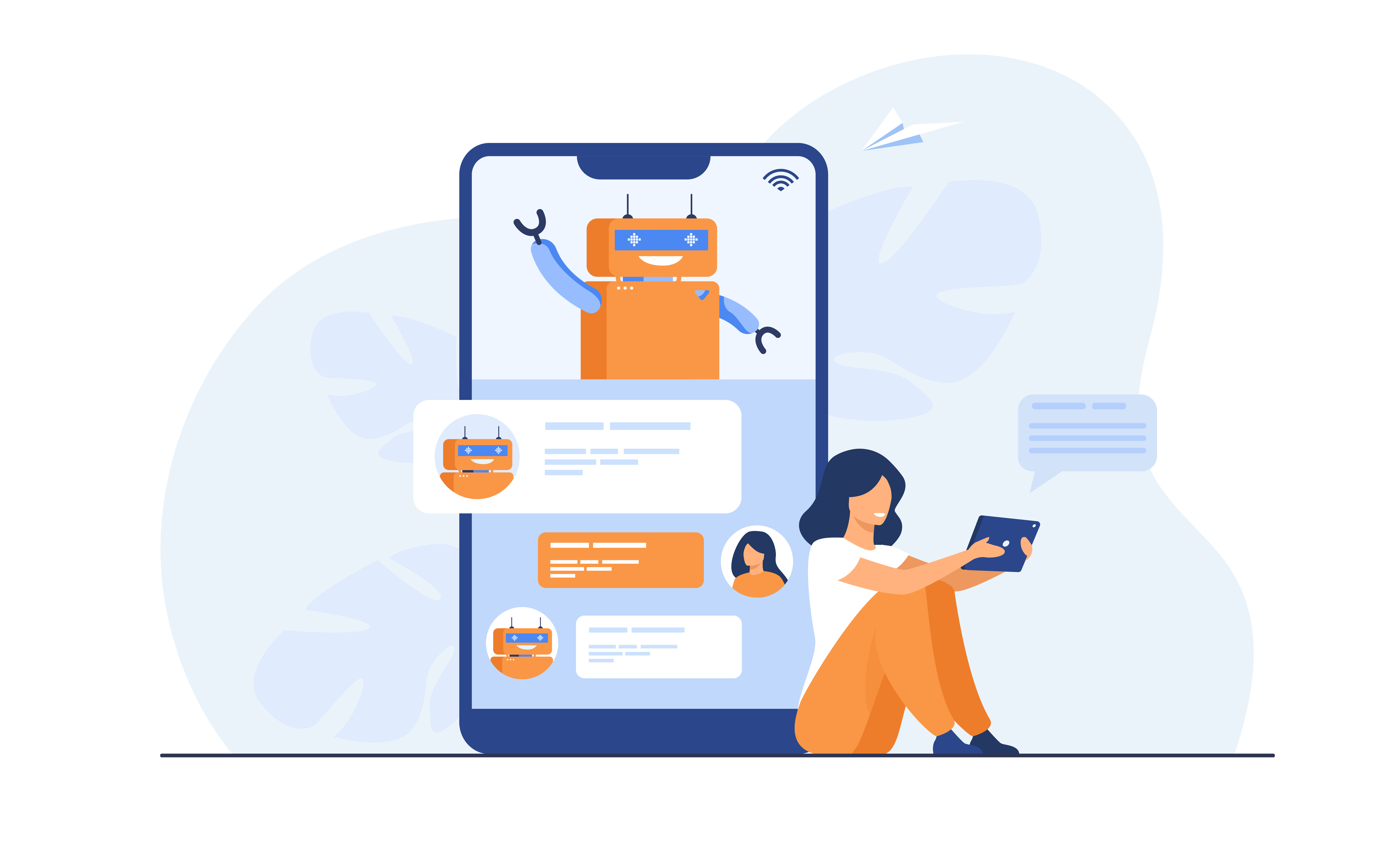Offering quick and efficient customer support is critical to building trust and satisfaction among website visitors. One way to achieve this is by adding a chatbot to your WordPress website. Chatbots can provide instant responses to frequently asked questions, assist in customer service, and even help guide visitors to the right pages on your site. In this blog, we’ll walk you through the process of adding a chatbot to your WordPress website using HubSpot in 2024.
HubSpot is a powerful Customer Relationship Management (CRM) system that offers a suite of tools for sales, customer service, marketing, and content management. One of its standout features is the free chatbot builder, which you can easily integrate into your WordPress website.
Step 1: Install the HubSpot Plugin on Your WordPress Website
Installing the HubSpot plugin on your WordPress website is the first step to adding a chatbot. This plugin will connect your WordPress site to your HubSpot account, allowing you to manage your chatbot and other HubSpot features directly from your WordPress dashboard.
How to Install the HubSpot Plugin:
- Log In to Your WordPress Dashboard: Open your WordPress website and log in to the dashboard.
- Navigate to Plugins: On the left-hand menu, click “Plugins” and “Add New”.
- Search for HubSpot: In the search bar, type “HubSpot” and press enter. The HubSpot – CRM, Email Marketing, Live Chat, Forms & Analytics plugin should appear.
- Install and Activate the Plugin: Click the “Install Now” button next to the HubSpot plugin. Once it’s installed, click “Activate” to enable the plugin on your website.
Step 2: Verify Your Email and Connect Your Website
After installing the HubSpot plugin, you must verify your email and connect your WordPress website to your HubSpot account.
Connecting Your Website:
- Verify Your Email: If you don’t have a HubSpot account, you’ll be prompted to create one during the plugin setup. Enter your email address and create a password. HubSpot will send you a verification email—click on the link to verify your account.
- Connect Your Website: After verifying your email, HubSpot will guide you through connecting your WordPress website to your new HubSpot account. This step is essential for managing your chatbot and other HubSpot tools directly from your WordPress dashboard.
Step 3: Create a Chat Flow by Selecting a Chatbot Type
With your HubSpot account set up and connected to your WordPress website, it’s time to create your chatbot. HubSpot allows you to create a variety of chatbots depending on your website’s needs. For this example, we’ll walk through setting up a tickets bot—a chatbot that can help users create support tickets or answer frequently asked questions.
Creating a Chat Flow:
- Access HubSpot: In your WordPress dashboard, click on the HubSpot icon in the left-hand menu to open the HubSpot dashboard.
- Navigate to Conversations: Go to the “Conversations” section in HubSpot and select “Chatflows.”
- Choose a Chatbot Type: Click “Create Chatflow” and choose the “Website” option. You’ll see different chatbot types; for this example, select the “Support Bot” or “Tickets Bot” type.
- Name Your Chatbot: Give your chatbot a name that reflects its purpose, like “Support Assistant” or “Help Bot.”
Step 4: Customize the Chatbot Using the Decision Tree
The decision tree is one of the most powerful features of HubSpot’s chatbot builder. The decision tree allows you to create a series of questions and responses that guide your visitors through a conversation, helping them find the information they need or creating a support ticket.
Customizing Your Chatbot:
- Add Questions and Responses: Start with a welcome message like “Hi! How can I help you today?” Then, based on the visitor’s response, add follow-up questions. For example, if the visitor asks about a product, the bot can provide more details or direct them to the appropriate page.
- Use Decision Branches: HubSpot allows you to create branches in the decision tree. For instance, if a visitor needs help with a specific issue, you can create different branches based on their selection, leading them to the most relevant information or support option.
- Integrate Support Tickets: If you’re using the tickets bot, you can set it up to automatically create a support ticket when a visitor needs help with something specific. This is particularly useful for websites that offer customer support services.
- Personalize the Experience: You can customize the chatbot’s tone and style to match your brand’s voice, making the interaction feel more personal.
Step 5: Preview and Save the Chatbot
Once you’ve customized your chatbot and are happy with its flow, previewing it before making it live is essential. This allows you to test the chatbot and ensure everything works as expected.
Previewing Your Chatbot:
- Click Preview: In the chatbot builder, you’ll find an option to preview the chat flow. Click on this to see how the chatbot interacts with visitors.
- Test Different Scenarios: Run through different conversation paths to ensure the chatbot responds correctly to various inputs. This is your chance to catch any errors or make adjustments.
- Save the Chatbot: Once you’re satisfied with the chatbot, click “Save” to finalize your changes.
Step 6: Check Out the Chatbot on Your Live WordPress Website
With your chatbot saved, it’s time to see it in action on your live WordPress website. This is where all your hard work comes together!
Checking Your Live Chatbot:
- Visit Your Website: Open your website in a new browser tab. The chatbot should appear in the bottom right corner of the screen.
- Interact with the Chatbot: Click the chatbot icon to start a conversation. This will help you see how the chatbot works in a real-world scenario.
- Monitor Performance: After launching the chatbot, watch how it performs. HubSpot provides analytics tools that allow you to track how visitors interact with the chatbot and identify areas for improvement.
Hostinger: A Great Web Hosting Service
While HubSpot offers an excellent chatbot builder, a reliable web hosting service is important to ensure your website runs smoothly. Hostinger is a popular choice for many website owners, offering fast loading times, reliable uptime, and great customer support.
Why Choose Hostinger?
- Affordable Plans: Hostinger offers various hosting plans that cater to different needs, from personal blogs to large eCommerce websites.
- 24/7 Support: Hostinger’s customer support is available around the clock to help with any issues.
Easy Integration: Hostinger’s hosting services work seamlessly with WordPress and HubSpot, making it easy to manage your website and chatbot from one place.
Starting from $2.99/month
Discount Code: MYFIRSTWEBSITE
Key Features
Extremely affordable
User-friendly control panel
LiteSpeed Cache for faster loading times
Why We Recommend It
Storage and Bandwidth:
30 GB SSD storage
100 GB bandwidth
Extras:
Free SSL certificate
Pros & Cons
- Low starting price
- Good performance for the price
- No free domain in the lowest-tier plan
- Support can be slow during peak times
Conclusion
Adding a chatbot to your WordPress website is a smart move in 2024. It will offer instant support to your visitors and improve their overall experience. With HubSpot’s free chatbot builder, the process is straightforward and doesn’t require any coding knowledge. From installing the HubSpot plugin and creating your chatbot to customizing it and making it live, each step is designed to help you build a more interactive and user-friendly website.Remember, while building a great chatbot is essential, having a reliable web host like Hostinger ensures your website remains accessible, fast, and secure. By combining HubSpot’s chatbot builder with Hostinger’s hosting services, you’re setting your website up for success.
So, whether you’re running a small blog, a business site, or an online store, consider adding a chatbot to assist your visitors quickly. It’s a step towards creating a more engaging and responsive online presence.





